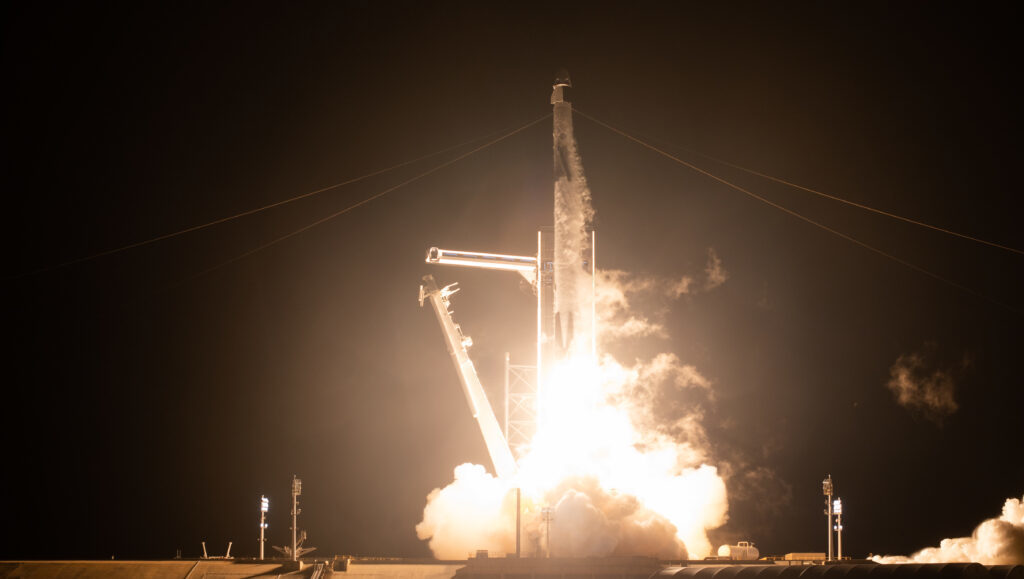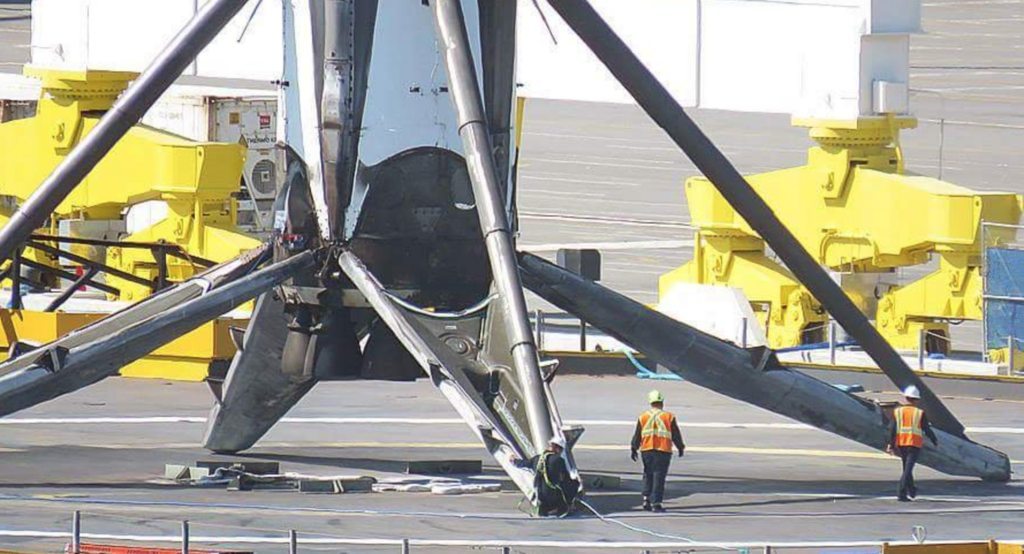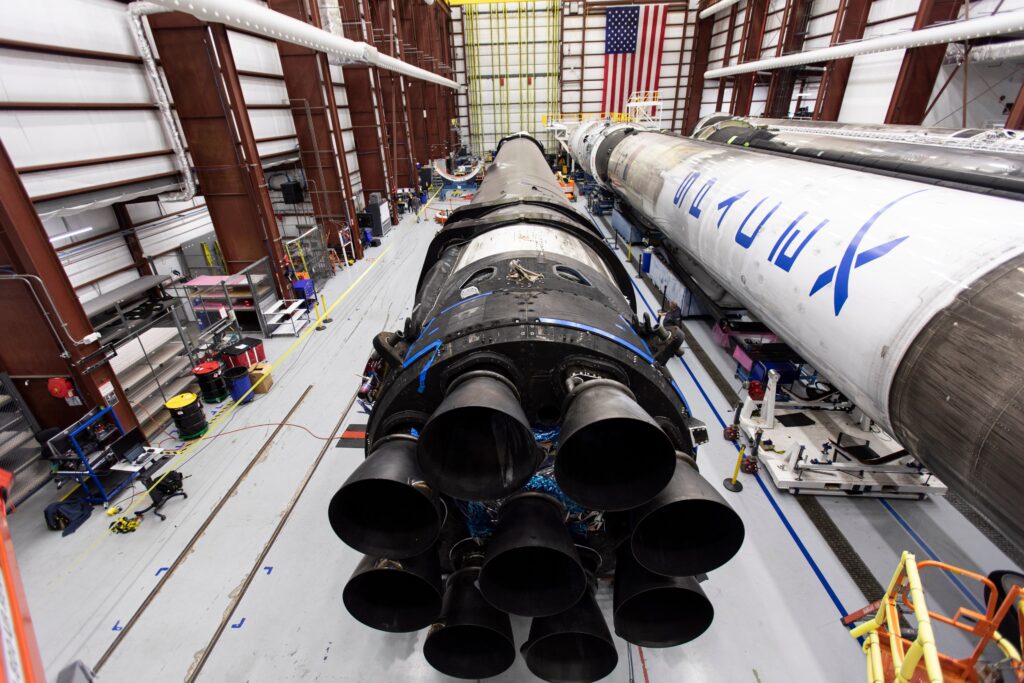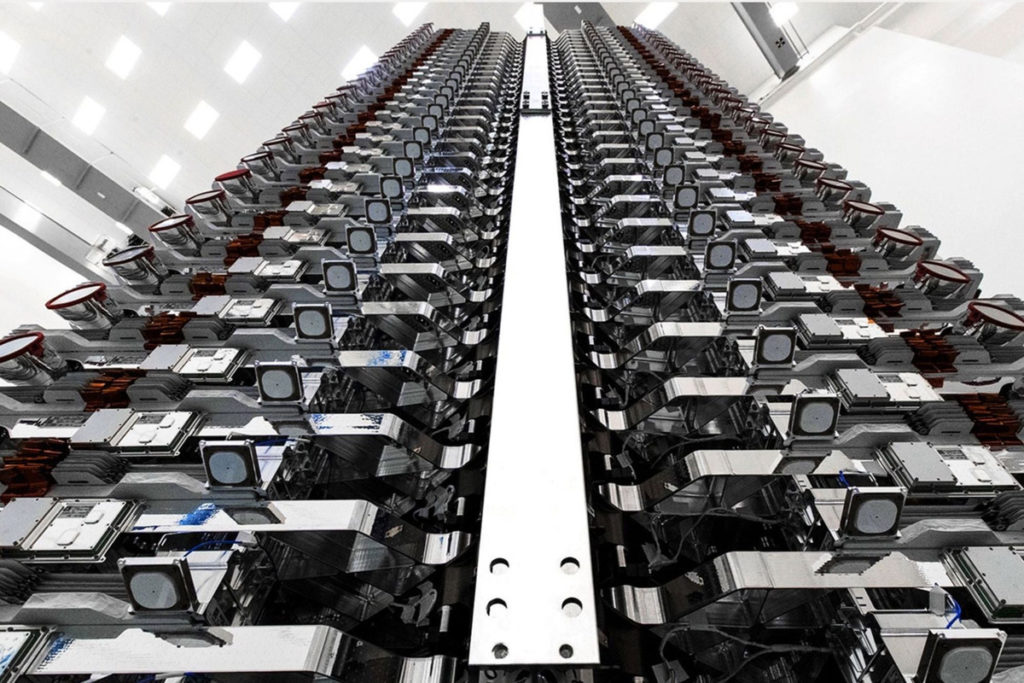
Elon Musk‘s SpaceX successfully achieved the landmark technical feat of being the first privately owned company to deliver human beings to the International Space Station on one of its Falcon 9 rockets.
Experts reckon this marks the start of what could be a golden age of space exploration as independent actors free from the shackles of unpredictable public finances or whims of whoever happened to win the last election can accelerate mankind’s long-promised progress out into the stars.
But, how did SpaceX actually do it through brilliant engineering know-how of course and a cost-conscious business-minded strategy.

New technology is of course central to the SpaceX brand and there’s been no shortage of groundbreaking innovations coming out of its workshops.
Since 2014 for instance hypersonic grid fins made of titanium have been installed on all SpaceX rockets to facilitate those precise landings.

The fins are typically arranged in an x-shaped configuration and according to Elon Musk will be manufactured from welded steel on future Starship vehicles owing to sheer size constraints.
A range of supplementary technologies to control the altitude of rockets has also been developed by SpaceX these are crucial for the landing stage of each mission and therefore the reusability of its rockets and of course from there the overall economic viability of the Program.
One of the main problem’s engineers needed to overcome early on was unwelcomed spinning on descent which caused fuel to slosh around in a centrifugal motion causing catastrophic engine failures.
Cold gas thrusters near the top helps stabilize and flip the rocket around so it maintains its upright position and although not directly related to the rockets themselves.
A small fleet of autonomous ocean-going landing platforms have also been developed by SpaceX to support touchdowns at sea.

Elon named the drone ships as “Just Read the Instructions” and “Of Course I Still Love You”, are two of the sentients, planet-sized Culture starships which first appear in Bank’s ‘The Player of Games,’. They aren’t warships either. They are General Contact Units, a type of ship used primarily for exploration and communication.
And coming soon “A Shortfall of Gravitas” landing gear in the form of nested carbon fiber and aluminum extendable.
Landing legs are another innovation developed by SpaceX with high pressure helium chosen as the lightweight working fluid to assist deployment these legs also incorporate what’s known as a crush core in order to better absorb the shock of hard landings.
Aside from all this shiny new tech more on which later the financial side of the SpaceX operation is just as important and fascinating in its own way remember.
SpaceX was founded in 2002 when Elon Musk flushed with cash from the sale of his PayPal empire to eBay set out to try and establish a colony on mars specifically, by bringing down the cost of rocket launches.
The cost element might sound drab but it’s very significant because although state actors had previously made great gains in space exploration the soviets putting Yuri Gagarin in orbit for instance or the American’s landing Neil Armstrong on the moon.
They’ve done so by essentially handing their scientists and engineers a blank checkbook Elon Musk on the other hand believed that approach to be foolhardy and wasteful and he’s been determined to make space travel not only possible but also to make it pay for itself and so far, he’s doing pretty well.
Read More: HOW MANY TIMES CAN SPACEX REUSE THE FALCON 9
With that never shy of bragging about his accomplishments on twitter musk recently noted that last time he checked it cost over a million dollars less to ensure a Falcon 9 mission compared with his rivals.
While let’s look at the numbers this summer SpaceX director of Falcon 9 integration Christopher Couluris stated that it costs around 28 million to launch a falcon 9 rocket and that with everything compare that to an April 2020 report on CNBC suggesting a United Launch Alliance launch costs about 95 million dollars.
If cost saving is the driving philosophy behind SpaceX then reusability is the practical means by which they go about achieving it just a couple of months ago a Falcon 9 rocket completed its seventh successful flight.
Each flight was interspersed with one of the vertical landings that SpaceX have somehow made into a routine.
Elon Musk once blankly stated he felt it was absurd that aerospace giants Lockheed Martin and Boeing don’t sell single-use aircraft but only sells single-use rockets and a modern jet airliner which can take off and land thousands of times costs about the same as a Falcon 9 rocket.

The Falcon 9 are constructed at SpaceX’s headquarters in Hawthorne, California. As you might expect security is tight so not a great deal is known about what goes on inside out front like a tourist attraction you might see at a film lot up the road in Hollywood is a Falcon 9 rocket in fact the first to successfully launch and land, they’re very proud of it.
Inside Hawthorne which incidentally used to be a facility for building Boeing 747 fuselages SpaceX operate on what’s known as a vertical integration model this means the vast majority of components engines rocket stages avionics and software are all made in-house this saves costs and helps speed up production to the point, they can manufacture a whole rocket in a little under two weeks.
Read More: SPACEX TO SET UP A BASE ON MARS! HERE’S WHAT THEY PLANNED TO DO FIRST.
How by not relying on external suppliers who can unpredictably create delays or competing priorities SpaceX can streamline the process the design of the rocket itself is also packed with interesting and innovative subtleties that help its core mission of reusability while at the same time being easier and cheaper to assemble.

For one the arrangement of the merlin rocket engines earlier versions of the Falcon 9 had nine engines arranged in three rows of three but a lighter more elegant solution was discovered at SpaceX and now eight are arranged in a circle around a central merlin booster this uses less materials and is therefore cheaper another brilliant engineering innovation concerns the so-called interstage of the Falcon 9.
When the first stage has lifted the payload into orbit traditionally the second stage blasts clear using an elaborate pyrotechnic system of exploding bolts on Falcon 9.
However, a less intensive pneumatic system was developed saving weight and vital energy SpaceX launches using rocket parts manufactured in Hawthorne and assembled near the launch site in Florida are becoming almost common place.
But Elon Musk’s company isn’t stopping there recently they’ve also taken over a large area of coastal land at Boca Chica Village near Brownsville, Southern Texas.
There the next generation of SpaceX space craft are taking shape and their ambition really is to go all the way to Mars as soon as this decade.
Read More: ELON MUSK’S SPACEX WILL MAKE ITS OWN LAWS ON MARS
The specific details of what’s happening inside Boca Chica are sketchy but what is known is that the new Mars bound space craft known as Starship is taking shape fast with around one full prototype a month emerging from the workshops.
Elon’s ultimate vision is for his Boca Chica to be shipyard of first commercial Cape Canaveral helped in no small part by its location near the equator here the accelerated spin of the earth assists with launches.
Not content with hopefully colonizing our interplanetary neighbors Starship will also be even better than Falcon 9 at what’s rapidly becoming the bread and butter of SpaceX business that is delivering satellites into orbit.

As part of SpaceX’s internet broadcast project Starlink it’s said that starship will be able to deliver more satellites more cheaply than anything currently on the launch pad which in turn will generate revenue for the company’s future rocket building exploits.
Which brings us nicely back to our original question because unlike Elon Musk’s bitter rival for space supremacy Jeff Bezos a man for whom cost isn’t really an object, SpaceX is always thinking about that all important bottom line.
So, how does SpaceX build their rockets as cost-effectively as possible so Elon Musk can go on making even better rockets and having a blast as he does it.
Additional Resources:
